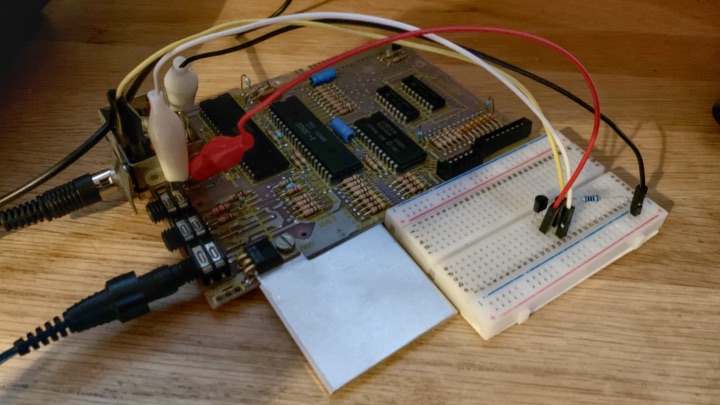Bread and Crocodiles
As mentioned previously, my recently-acquired ZX81 wasn’t providing a usable picture over the original RF connection, and so I’d decided to try to modify it to produce composite video output. The oldest ZX81s produce a slightly out-of-spec video signal lacking back porch, and so properly fixing the video involves adding circuitry to modify the signal using a 555 timer. However, opening up my unit revealed that it was a later version1 that does produce a proper signal. For these, the required mod is almost comically simple; a single transistor and a resistor, and maybe a second resistor if you need to adjust the brightness. You can get such a mod pre-built, but I decided to give it a go myself.
Being a coward prudent, I assembled the components on a solderless breadboard before trying to permanently modify the original hardware. Once I had this, I decided to try starting up the ZX81 with it temporarily connected, as an experiment. I was pretty confident that I wouldn’t damage the ZX81 itself (apart from maybe the RF modulator, which wasn’t useful anyway), so the worse that could happen would be no picture.

As you can see, the setup is a little janky. The crocodile clips seemed likely to either not make proper contact or short with something they shouldn’t. Moreover, I’d not disconnected the RF modulator, so that would also be driving a signal on the same RCA socket.
With expectations suitably modest, I connected it to the TV and powered it up, and… it worked! A solid, crisp K-cursor appeared exactly as it should. Now I’ve confirmed that the mod works, the next step is to solder it in properly and put the whole thing back together. Wish me luck.
-
Specifically, an issue 3 board with a 2C210E ULA. [back]